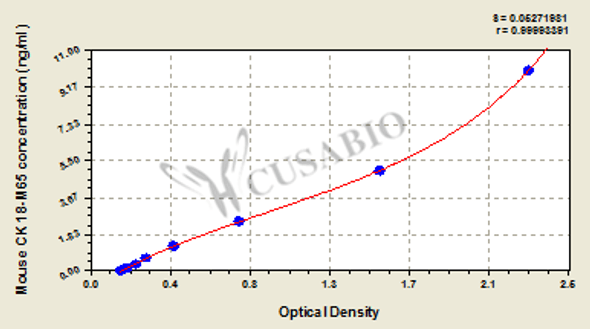Description
Clonality: Monoclonal
Host: Mouse
Purification: IgG
Reactivity: Monkey, Mouse, Rat, Human
The intermediate filaments consist of a large number of nuclear and cytoplasmic proteins that are expressed in a tissue- and differentiation-dependent manner. The components of the intermediate filaments are highly conserved during evolution and show a high degree of conservation among species (1, 2). Cytokeratins are major structural proteins found in epithelial cells, which form the cytoplasmic network of intermediate filaments (3). Cytokeratins consist of at least 20 unique gene products that fall into two categories: the relatively acidic type I group (CK9–CK20) and the neutral–basic type II group (CK1–CK8). These cytokeratins are combined in a 1:1 ratio into noncovalent heteropolymers, which are further assembled into keratin filaments (4, 5). The expression of cytokeratin proteins depends primarily on the epithelial cell type and its degree of differentiation; therefore, assessments of cytokeratin expression status are useful for distinguishing carcinomas from other types of cancer (6).The cytokeratin 18 gene (CK18) is located on chromo-some 12q13 and is 3,791 base pairs long. It codes for a type I intermediate filament protein that is found primarily in many types of single-layered or "simple" epithelial tissues and is localized in the cytoplasm and perinuclear region (4).CK18 and its coexpressed complementary type II keratin partner, CK8, are persistently expressed in a variety of adult epithelial organs, such as the liver, lung, kidney, pancreas, gastrointestinal tract, and mammary gland, and are also expressed by cancers that arise from these tissues (7). In the absence of CK8, the CK18 protein is degraded and keratin intermediate filaments are not formed (8). A cDNA clone forCK8 was isolated and expressed in mouse fibroblasts that had previously been transfected with the CK18 gene, which resulted in the formation of stable keratin filaments (9).Thus, the presence of a type I (CK18) and a type II (CK8)keratin appears to be both necessary and sufficient for the formation of keratin filaments (8, 9). [from: Yu-Rong Weng Y-R., Cui Y. and Fang J-Y. (2012) Biological Functions of Cytokeratin 18 in Cancer. Mol Cancer Res 10(4):485-493; DOI: 10.1158/1541-7786.MCR-11-0222]






